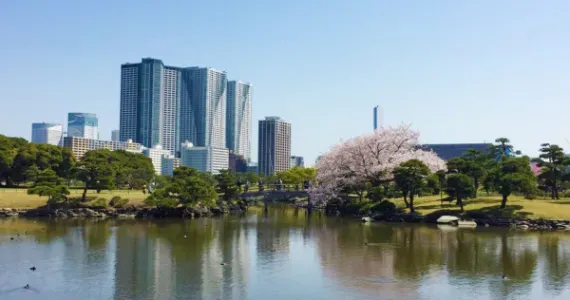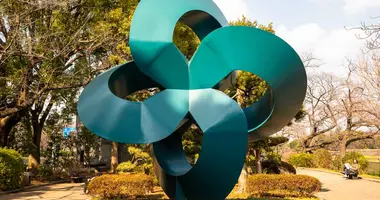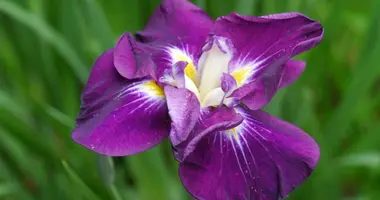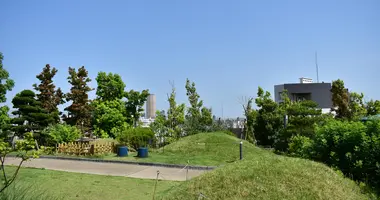Shinjuku Garden, a breath of fresh air in Tokyo 新宿御苑
- Published on : 19/05/2020
- by : E.P. / I.D.O
- Youtube
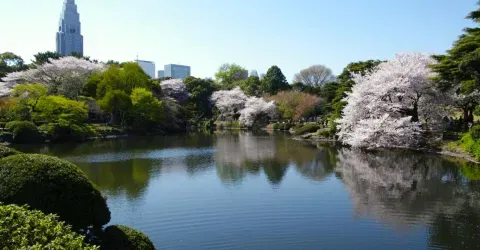
Particularly popular, the Shinjuku Garden attracts Japanese people, tourists and photographers throughout the cherry blossom season.
DR
Shinjuku-gyoen: Shinjuku Imperial Garden
Shinjuku Garden, nicknamed "urban oasis", is one of the most important parks in the capital. Its fifty-eight hectares and some ten thousand trees provide a real breath of fresh air, just min from the bustling district of Shinjuku. In spring, the park becomes a real attraction when nearly 2000 cherry trees bloom!
The long history of Shinjuku-gyoen garden
Before becoming the second-largest park in the capital (behind Yoyogi Koen Park ), Shinjuku-gyoen was owned by the family of Kiyonari Naito, a daimyo (feudal governor) who received these lands from the shogun Ieyasu Tokugawa at the time of Edo (1603-1867).
In the Meiji era (1868-1912), the site became state property. From 1872, it served as a research ground for the promotion of modern agricultural techniques. Plantations of fruit trees, vegetables, sericulture, and even breeding: everything was tested in this large urban space to improve the techniques and agricultural varieties produced in Japan.
Later, with the fashion of the botanical gardens, it was renamed "garden of plants". It kept its function as an experimental garden, but a farm, duck and fish ponds, and even a zoological park were added (which was then transferred to Ueno Park, its current location). The site then belonged to the Imperial family. The cultivation of orchids and tropical flowers in greenhouses began there, a first in Japanese history. Himalayan cedars, sycamores, and other species were planted and the garden played a key role in the development of agriculture and horticulture in Japan.
In May 1906, the site became Shinjuku Gyoen National Garden, and the opening ceremony was presided over by Emperor Meiji to celebrate Japan's victory in the Russo-Japanese War. Later, in the Taisho era (1912-1926), a golf course was even built on the western garden land. The garden suffered greatly from the bombings of WWII and in December 1946 the Japanese government converted it into a national park.
Even today Shinjuku Gyoen has retained part of its role in horticulture and is famous for its cultivation of chrysanthemums and its activities for the conservation of endangered plant species.
Three different gardens in the same park
The Japanese Garden, the oldest of the three, is a traditional landscaped garden set around a pond dotted with islets and bridges. It includes several pavilions including the Kyu Goryotei, "old palace", in Chinese style. Offered on the occasion of Emperor Hirohito's wedding by the Japanese community residing in Taiwan, it is also called the "Taiwan Pavilion". From this airy building, there is a superb view of the garden. In the fall, the garden hosts an exhibition of chrysanthemums cultivated by horticulturalists from the much-visited Shinjuku-gyoen, while in the spring its cherry blossoms attract thousands of visitors. A tea house allows you to wind down while appreciating the beauty of the place with a cup of tea!
To the east of the park, the French formal garden contrasts with its symmetry. It was created at the end of the 19th century by the landscaper Henri Martinet who was the steward of the gardens of Versailles. Here it is the multi-colored rosebushes that make it famous and attract photographers.
The English landscaped garden, in true British garden style includes a large area covered with lawns shaded by many trees and surrounded by wild cherry trees. It is the ideal place to rest or have a picnic, especially in the cherry blossom season. Its central tower 30 meters high and covered with tulips is one of the emblems of the park.
In addition to these three gardens, the park has a huge greenhouse (near the Ookido entrance gate), where you walk through a mini-jungle, an area where various species of tropical plants and flowers grow, and a pond covered with lotus.
Wooded areas, lawns, an art gallery, restaurant, kiosks, and an information center make this place a paradise for visitors seeking peace and greenery.
Three entrances allow (paid) access to the park: the Shinjuku gate located to the north, the Ookido gate to the east, and the Sendagaya gate to the south.
Discover the most beautiful Japanese gardens in Tokyo:
- The Hama-Rikyu Onshi Teien garden
- Koishikawa Shokubutsuen Botanical Garden
- Higashi-gyoen imperial garden
- The garden of the Nezu museum
Visitez les jardins de Tokyo avec un guide !
Address, timetable & access
Address
Timetable
Shinjuku-gyoen mae station (Marunouchi lines) Shinjuku 3 chome station (Marunouchi, Fukutoshin or Toei Shinjuku lines)Price
Adults: 500 yen ($4.50/3.75€) 65 and over: 250 yen ($2.25/1.85€ ) Students (with valid ID): 250 yen ($2.25/1.85€$2.25/1.85€) Children (middle school / 15 and under): FreeAccess
March 15 to September 30: 9 am to 5.30 pm (doors close at 6 pm) July 1 to August 20: 9 am to 6.30 p. (doors close at 7 pm)







